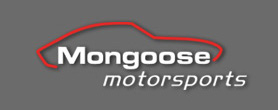History of the 1963 Grand Sport
THE LEGEND LIVES ON AT MONGOOSE MOTORSPORTS
In the early 1960′s Carroll Shelby’s Cobras were dominating America’s Sports Car, the Corvette in racing. The Cobra was about 1,000 lbs. lighter than the Corvette and while the power generated by Chevrolet engines was comparable to the aluminum bodied Cobra; the nimble “snake” consistently beat the fiberglass Corvette.
In late 1962 rumors began to circulate that a Corvette was being developed that would end Shelby’s dominance on the racing circuits. “Bow Tie” fans and racers were ecstatic.
Zora Arkus-Duntov, father of the Corvette, and others at Chevrolet launched a plan to build 125 ultra light Corvettes called the Grand Sport. By building 125 cars, the Grand Sport would qualify as a GT production car under international racing rules. Sadly, the General Motors front office stopped the program. When the cease and desist order came down from the ivory tower, five Grand Sports had already been completed.
General Motors pulled the plug on the Corvette racing program because in 1957, General Motors President Red Curtice persuaded the American Manufacturers Association to pull out of providing any more factory participation or assistance in racing events. It was believed that Henry Ford pulled a political end run to get Curtice involved so that General Motors in particular would no longer be making special or export parts for their cars.
Ford, in gesture only, said they would observe the ban, while continuing to supply parts to racing teams through an outside agency. Under the guise of being an independent company, race teams like Holman and Moody worked closely with the Ford factory in development of NASCAR and other racing programs and so called “export” parts for Ford engines.
Chrysler Corporation closely followed Ford’s lead in that area, except they labeled their development “police packages” or “severe duty” parts. A group of Chrysler engineers on their own formed an organization which provided assistance to any one that asked for help. They were not paid through any funds from Chrysler itself. Only General Motors strictly observed the racing ban participation, which is exactly what Henry Ford II wanted.
Duntov’s objective with the Grand Sport was to make it ultra lightweight. In the end, they weighed in at about 1,900 lbs. or about 1,350 lbs. lighter than a stock Corvette coupe. They had a 377 cubic inch aluminum V-8 engine putting out 550 horsepower. They ran with a 4-speed transmission and 4-wheel independent suspension.
The 1963 LeMans was to have been the Grand Sport’s debut in Europe. Since the requisite 125 cars had not been built, the effort had to be scrapped.
Early on, the Grand Sports showed brilliantly at times while racing. When they ran head to head against Cobras, they showed that they were both faster and better handlers than Shelby’s snakes. The Cobras, having met the 125 minimum were certified as production cars while the Grand Sports were not. That was an important distinction. Since it wasn’t classed as a production car pursuant to FIA racing rules, the Grand Sport had to compete in the prototype class where it ran against the likes of Chaparral, Porsche RS-60, and “Birdcage” Maseratis. The Grand Sport wasn’t competitive against those full blown racers. The Grand Sports went to racers and teams like John Mecom and Roger Penske. Before they went to private hands, GM pulled the 377 cubic inch motors. In the hands of privateers, they were mostly run with the big block 427 motor. Initially, even though the 427 was heavier than the small block 377, the Grand Sports ran with some measure of success. At Nassau in 1963, they put on an exciting show besting the Cobras and finishing third and fourth behind two prototypes. Roger Penske returned to Nassau in 1964 and won the Nassau Trophy race, serving pretty much as the swan song.
Carroll Shelby and Ford came with their own 427, whereas in the ensuing months and years, the Cobra continued to be developed and improved while the Grand Sport and racing Corvettes were stagnating in trying to compete with no factory support. It was like going to a gun fight with a pocket knife.
During their short life span, the Grand Sports ran at tracks like Sebring, Watkins Glen, Daytona, Nassau, Road America and Mosport. Some of the notable drivers were Roger Penske, AJ Foyt, Jim Hall, Dick Thompson, John Cannon, Dick Guldstrand, Don Yenko and Delmo Johnson.
Remarkably, all five of the original Grand Sports exist today, in various conditions. The number 12 roadster was in the R& M Auction in Phoenix, Arizona (January 2009) and did not sell with the high bid at a staggering 4.9 million dollars.
The opportunities to see one of the original five Grand Sports are few and far between. Only once in history, at the 2003 Amelia Island Concours in Florida, were all five of these historic racing icons ever together at one time.
Thanks to Mongoose Motorsports you can own a beautiful recreation of this piece of “Corvette History”. While cruising down the boulevard in one of these spectacular cars, you can only imagine “What could have been?”
Send us an email or give us a call. +Contact us today to learn more!







